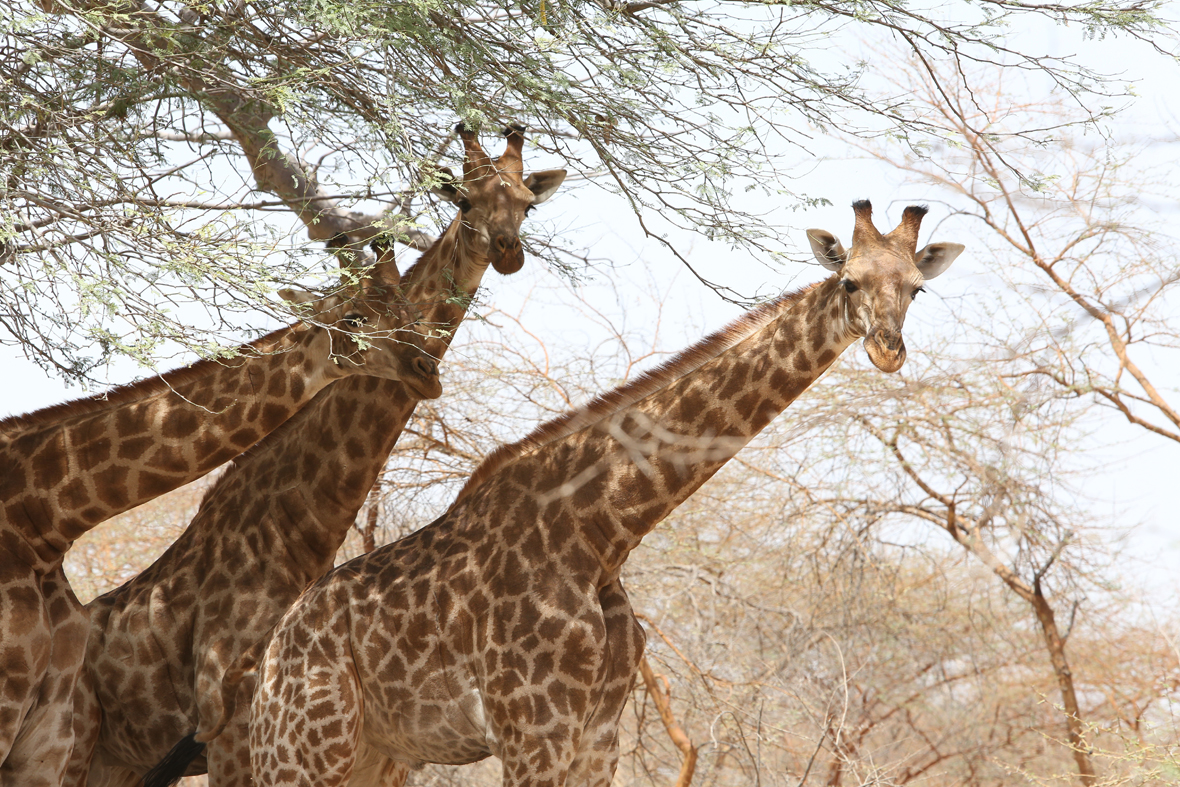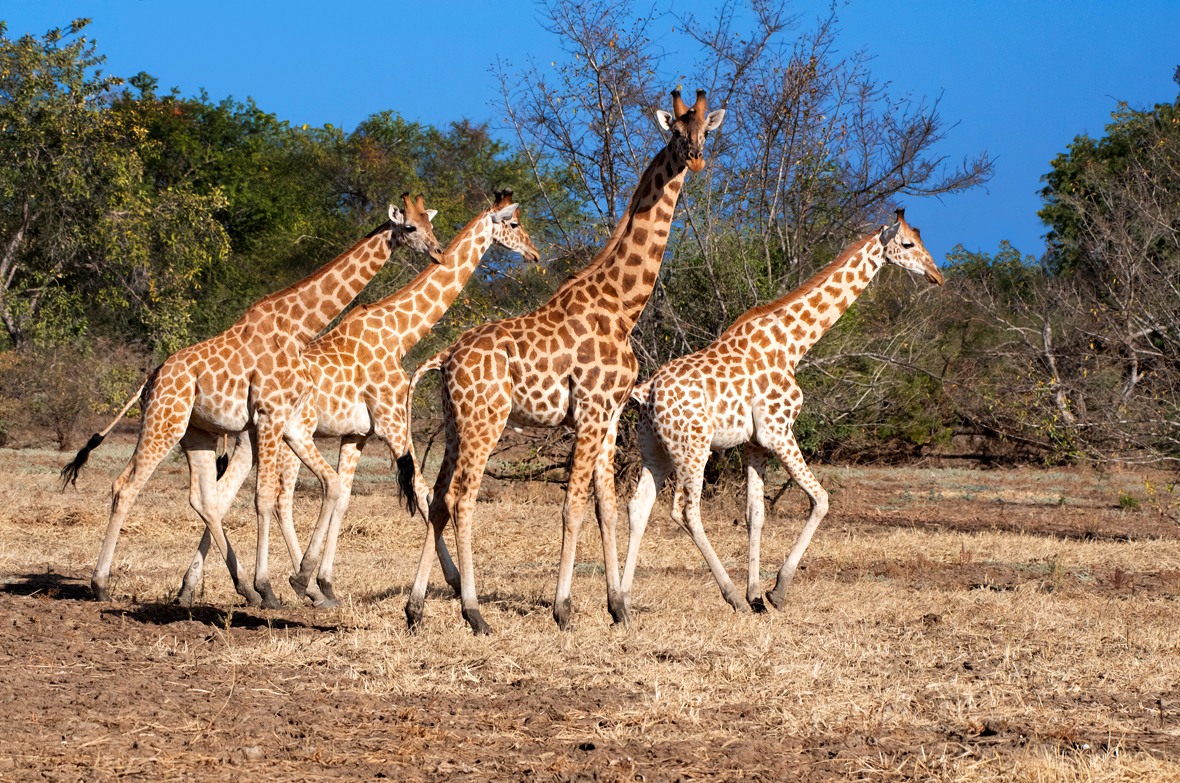Saving the Kordofan Giraffe: A Conservation Lifeline in Northern Cameroon’s Faro National Park

Kordofan giraffes in Faro National Park, Northern Cameroon.
A Gentle Giant in a Wild Corner of Cameroon
Graceful yet vulnerable, the Kordofan giraffe quietly roams the savannas of Faro National Park in northern Cameroon. This rare subspecies, found only in a few parts of Central Africa, is the only giraffe of its kind in Cameroon and one of the most threatened on the continent.
Easily recognized by their pale, irregular patches and smaller size compared to their southern cousins, Kordofan giraffes are more than just striking animals. They are vital to the park’s ecological balance, dispersing seeds and shaping the vegetation with every browse. Yet despite their importance, their existence hangs by a thread.
With their population having declined by more than 40% in recent decades due to poaching and habitat loss, conservationists have rallied to their defense. And now, as the world marks World Giraffe Day, the story of the Kordofan giraffe stands out as one of struggle, resilience, and cautious hope.
“Giraffe conservation today requires more than just protecting a species; it demands that we rethink how we manage ecosystems under pressure, "says Dr. Philip Muruthi, Vice President, Species Conservation and Science at AWF. "The Kordofan giraffe, with its shrinking range and dwindling numbers, is a signal that the systems we rely on are under stress."
A Wild Refuge for a Unique Species
Located in northern Cameroon, Faro National Park spans a wild and rugged landscape made up of open savannas, dry woodlands, and winding rivers. Unlike the dense rainforests of the south, Faro’s scattered tree cover featuring species like Acacia hockii and Afzelia africana creates the perfect browsing grounds for giraffes.
Here, Kordofan giraffes not only feed but also help maintain the ecosystem by dispersing seeds and shaping vegetation. In many ways, they are the silent stewards of this ancient landscape.
A Species on the Edge
Despite their ecological importance, Kordofan giraffes face mounting threats. Between 1985 and 2015, their population dropped by over 40%. Poaching remains a serious danger. These giraffes are targeted for their skin, bones, tails, and even hair, used in traditional ceremonies and crafts.

Additionally, their habitat is under pressure from overgrazing and human activity, particularly from seasonal livestock movements known as transhumance.
“The story of the giraffe in Faro is not just one of survival, it’s about rebuilding trust between people, wildlife, and the land,” says Anthony Agbor, Faro Landscape Director, AWF. “These giraffes have managed to persist in a challenging landscape shaped by transhumance, poaching, and limited resources. Our progress didn’t come from chance; it came from sustained presence, consistent monitoring, and local partnerships that respect both ecological needs and community realities. Every giraffe we identify is a sign that protection is possible when the people closest to the problem are also part of the solution. We’re not managing wildlife in isolation; we’re managing a future for this landscape.”
Hope Through Conservation
Still, there is hope. The African Wildlife Foundation (AWF), in partnership with Cameroon’s Ministry of Forestry and Wildlife (MINFOF) and with support from the European Union, has been working tirelessly to protect these giraffes. Local ecoguards and conservation leaders are central to this effort, focusing on anti-poaching, habitat restoration, and population monitoring.
These are not just projects. They are lifelines for a species fighting for survival.
Signs of Progress
And the efforts are showing results. In 2021, giraffes in Faro were seen only in isolated pockets. By 2024, thanks to more frequent patrols and new monitoring tools like camera traps, sightings expanded to a broader area of the park. In 2023 alone, 21 individual giraffes were identified in the central zone, a tangible sign of recovery.
“At AWF, we are building conservation models that integrate science with governance where habitat protection is tied to land-use planning, and wildlife survival is part of national development goals," adds Dr. Muruthi. "What’s happening in Faro is encouraging, but it also reminds us that recovery is fragile without long-term investment and policy coherence across Africa’s giraffe range states."
That’s not just a statistic. That’s 21 lives, each representing resilience and the power of conservation.
Standing Tall for Wildlife Across Africa
As the tallest land animals on Earth, with males reaching up to 5.5 meters (18 feet), giraffes seem untouchable. But their height offers no protection from poachers or shrinking habitats. What truly protects them is people, scientists, rangers, communities, and supporters like you who believe these gentle giants deserve a future.
A Call to Action
This World Giraffe Day, let’s remember the Kordofan giraffe. Let’s celebrate the progress being made in Faro and across the continent. And let’s stand tall for wildlife, because when we protect giraffes, we protect so much more than one species.
Find out how communities in the Faro landscape are reviving traditions of conservation